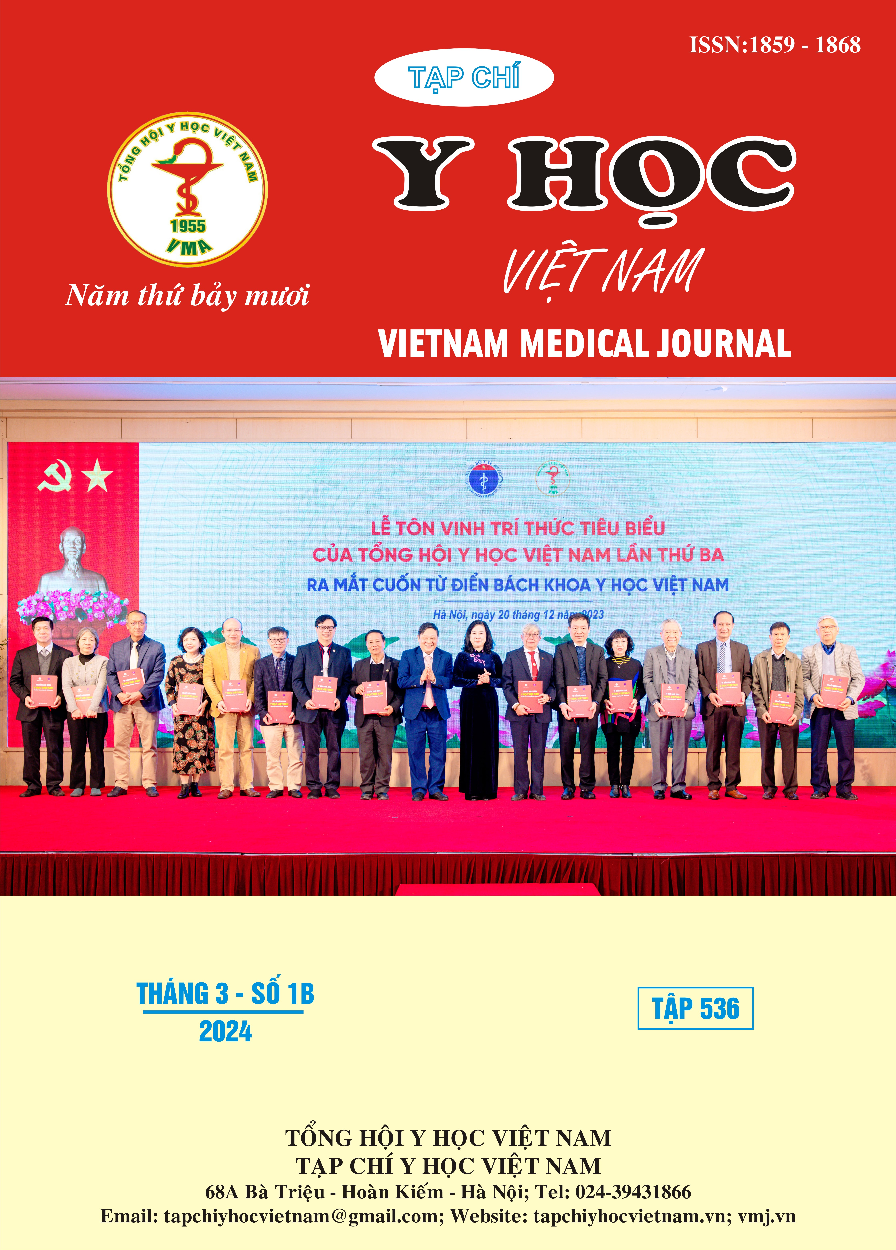NỒNG ĐỘ MALONDIALDEHYDE TRONG BAO RĂNG, MÔ NƯỚU VÀ NƯỚC BỌT Ở BỆNH NHÂN CÓ RĂNG KHÔN HÀM DƯỚI LỆCH NGẦM KHÔNG TRIỆU CHỨNG
Nội dung chính của bài viết
Tóm tắt
Mục tiêu: Nồng độ các dạng oxy hóa hoạt động tăng dẫn đến stress oxy hóa và tổn thương mô. MDA là một trong những sản phẩm sau cùng có trọng lượng phân tử thấp của quá trình peroxy hóa lipid. Nghiên cứu chúng tôi nhằm định lượng, so sánh nồng độ MDA trong bao răng, mô nướu và nước bọt cũng như đánh giá tương quan nồng độ MDA trong nước bọt và bao răng ở những bệnh nhân này, qua đó xác định có hay không stress oxy hóa trong bao răng của các răng khôn hàm dưới lệch ngầm (RKHDLN) không triệu chứng trên phim toàn cảnh. Vật liệu và phương pháp nghiên cứu: Nghiên cứu cắt ngang mô tả thực hiện trên mẫu gồm 24 bệnh nhân có một RKHDLN không triệu chứng về lâm sàng lẫn X-quang. Thu thập 24 mẫu nước bọt trước nhổ, 24 mẫu bao răng có độ rộng nhỏ hơn 2,5mm trên phim toàn cảnh và 24 mẫu mô nướu khỏe mạnh được lấy trong khi nhổ để làm nhóm chứng. Tất cả các mẫu sau đó được định lượng MDA. Kết quả: Nồng độ MDA trong bao răng cao hơn đáng kể so với trong mô nướu khỏe mạnh ở người có RKHDLN không triệu chứng. Tuy nhiên, nồng độ MDA trong nước bọt không tương quan với nồng độ MDA trong bao răng (p=0,24). Kết luận: Stress oxy hóa đáng kể có thể xảy ra trong bao răng của các RKHDLN không triệu chứng, qua đó gợi ý rằng tăng nồng độ MDA đóng vai trò quan trọng của quá trình stress oxy hóa trong bao răng. Từ những kết quả thu được trong nghiên cứu, chúng tôi cho rằng cần có những nghiên cứu sâu hơn và toàn diện hơn để xác định vai trò của chất chống oxy hóa trong việc trung hòa các gốc tự do trong bao răng.
Chi tiết bài viết
Tài liệu tham khảo
2. Adelsperger, J., et al., Early soft tissue pathosis associated with impacted third molars without pericoronal radiolucency. Oral Surgery, Oral Medicine, Oral Pathology, Oral Radiology, and Endodontology, 2000. 89(4): p. 402-406.
3. Brkic, A., et al., Pathological changes and immunoexpression of p63 gene in dental follicles of asymptomatic impacted lower third molars: an immunohistochemical study. Journal of Craniofacial Surgery, 2010. 21(3): p. 854-857.
4. Cabbar, F., et al., Determination of potential cellular proliferation in the odontogenic epithelia of the dental follicle of the asymptomatic impacted third molars. Journal of Oral and Maxillofacial Surgery, 2008. 66(10): p. 2004-2011.
5. Damante, J.H. and R.N. Fleury, A contribution to the diagnosis of the small dentigerous cyst or the paradental cyst. Pesquisa Odontológica Brasileira, 2001. 15: p. 238-246.
6. Makino, Y., et al., Role of innate inflammation in the regulation of tissue remodeling during tooth eruption. Dentistry Journal, 2021. 9(1): p. 7.
7. Li, K., et al., The radiological and histological investigation of the dental follicle of asymptomatic impacted mandibular third molars. BMC Oral Health, 2022. 22(1): p. 642.
8. Tekin, U., et al., Malondialdehyde levels in dental follicles of asymptomatic impacted third molars. J Oral Maxillofac Surg, 2011. 69(5): p. 1291-4.


